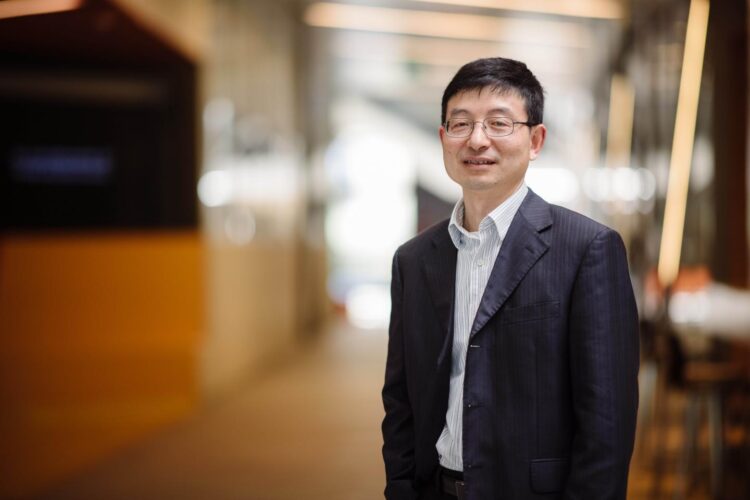
Credit: Monash University
A global research team has been able to transform brackish water and seawater into safe, clean drinking water in less than 30 minutes using metal-organic frameworks (MOFs) and sunlight.
In a discovery that could provide potable water for millions of people across the world, researchers were not only able to filter harmful particles from water and generate 139.5L of clean water per kilogram of MOF per day, but also perform this task in a more energy-efficient manner than current desalination practices.
The World Health Organization suggests good quality drinking water should have a total dissolved solid (TDS) of
This world-first research was published in the prestigious journal Nature Sustainability.
Lead author Professor Huanting Wang from the Department of Chemical Engineering at Monash University in Australia, said this work opened up a new direction for designing stimuli-responsive materials for energy-efficient and sustainable desalination and water purification.
“Desalination has been used to address escalating water shortages globally. Due to the availability of brackish water and seawater, and because desalination processes are reliable, treated water can be integrated within existing aquatic systems with minimal health risks,” Professor Wang said.
“But, thermal desalination processes by evaporation are energy-intensive, and other technologies, such as reverse osmosis, has a number of drawbacks, including high energy consumption and chemical usage in membrane cleaning and dechlorination.
“Sunlight is the most abundant and renewable source of energy on Earth. Our development of a new adsorbent-based desalination process through the use of sunlight for regeneration provides an energy-efficient and environmentally-sustainable solution for desalination.”
Metal-organic frameworks are a class of compounds consisting of metal ions that form a crystalline material with the largest surface area of any material known. In fact, MOFs are so porous that they can fit the entire surface of a football field in a teaspoon.
The research team created a dedicated MOF called PSP-MIL-53. This was synthesised by introducing poly(spiropyran acrylate) (PSP) into the pores of MIL-53 – a specialised MOF well-known for its breathing effects and transitions upon the adsorption of molecules such as water and carbon dioxide.
Researchers demonstrated that PSP-MIL-53 was able to yield 139.5L of fresh water per kilogram of MOF per day, with a low energy consumption. This was from desalinating 2,233 ppm water sourced from a river, lake or aquifer.
Professor Wang said this highlights the durability and sustainability of using this MOF for future clean water solutions.
“This study has successfully demonstrated that the photoresponsive MOFs are a promising, energy-efficient, and sustainable adsorbent for desalination,” Professor Wang said.
“Our work provides an exciting new route for the design of functional materials for using solar energy to reduce the energy demand and improve the sustainability of water desalination.
“These sunlight-responsive MOFs can potentially be further functionalised for low-energy and environmentally-friendly means of extracting minerals for sustainable mining and other related applications.”
###
To download a copy of the research, please visit https:/
Professor Huanting Wang from the Department of Chemical Engineering at Monash University led the study, with research support from:
– Ranwen Ou (Monash University, Xiamen University)
– Dr Huacheng Zhang (Monash University, Department of Chemical Engineering)
– Vinh Truong (Monash Institute of Medical Engineering)
– Associate Professor Lian Zhang (Monash University, Department of Chemical Engineering)
– Dr Hanaa M. Hegab (Monash University, Department of Chemical Engineering)
– Li Han (Zhengzhou University)
– Jue Hou (Monash University, Department of Chemical Engineering)
– Professor Xiwang Zhang (Monash University, Department of Chemical Engineering)
– Professor Ana Deletic (The University of New South Wales)
– Professor Lei Jiang (Monash University, Chinese Academy of Sciences)
– Professor George Simon (Monash University, Department of Materials Science and Engineering)
MEDIA ENQUIRIES
Monash University
T: +61 3 9903 4840 E: [email protected]
For more Monash media stories, visit our news and events site
Media Contact
Leigh Raymond Dawson
[email protected]
Related Journal Article
http://dx.





